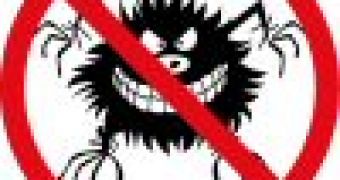Have you ever been really annoyed by a virus? There are some threats that are really pesky and you can't get rid of them. And by this, I mean that you can't make them go away using the AV. I'm going to give you a little tutorial about one way to eliminate them, if you're running Windows.
Here's an example - NOD32 disclosed a virus, "WIN32/VB.NFZ Trojan" infecting a file ctfmon.exe. So the anti-virus found the threat but it said that it couldn't do anything about it because something occurred when AMON (one of the program's processes) tried to disinfect it. No matter how many times you press delete, the virus is still there. So what do you do? How do you get rid of that virus?
Well, here are a few options that you have. You can try and disinfect it with another AV, for one thing - if that works, then you can consider yourself lucky. But what if no free anti-virus can help you and you don't want to spend your dough on a new one? Well, if the file is not something critical, you can just delete it manually - that is the simplest way of doing things. In my case, ctfmon.exe is a file used by Microsoft Office and which doesn't close even if you exit Office. So I could afford deleting it. Go to the folder the AV says it found the virus and just delete the infected file. Of course, this won't work in every case, as the virus may not allow you to delete it. So what can be done?
Well, there are other ways of going around this, but once again, if the file is not of critical importance, here's what you can try. Restart your computer, and during the booting process keep pressing F8 until a menu asking you how you wish to start your machine appears. When that happens, select "Safe Mode with Command Prompt". This might seem a method for the tech-savvy, but I'm going to explain this in a simple way: all you need to do is know a few CMD commands, like "DIR" (shows contents of a directory) CHDIR (changes a directory) CHDSK (changes the disk) and ERASE (deletes files) and in case you need help you can just type HELP and press "Enter" and you'll get a list of commands. Now, all you have to do is go to the directory the AV reported the virus in and just erase it. It's not hard, all you need to do is type "CHDIR -path-" to get there, then type "DIR" to see what files are in the directory and then type "ERASE -filename-" and that's it! You've deleted the infected file! It is recommended to do this in Safe Mode because it starts fewer processes and you can properly delete the file. So, that's one way of doing things!

 14 DAY TRIAL //
14 DAY TRIAL //